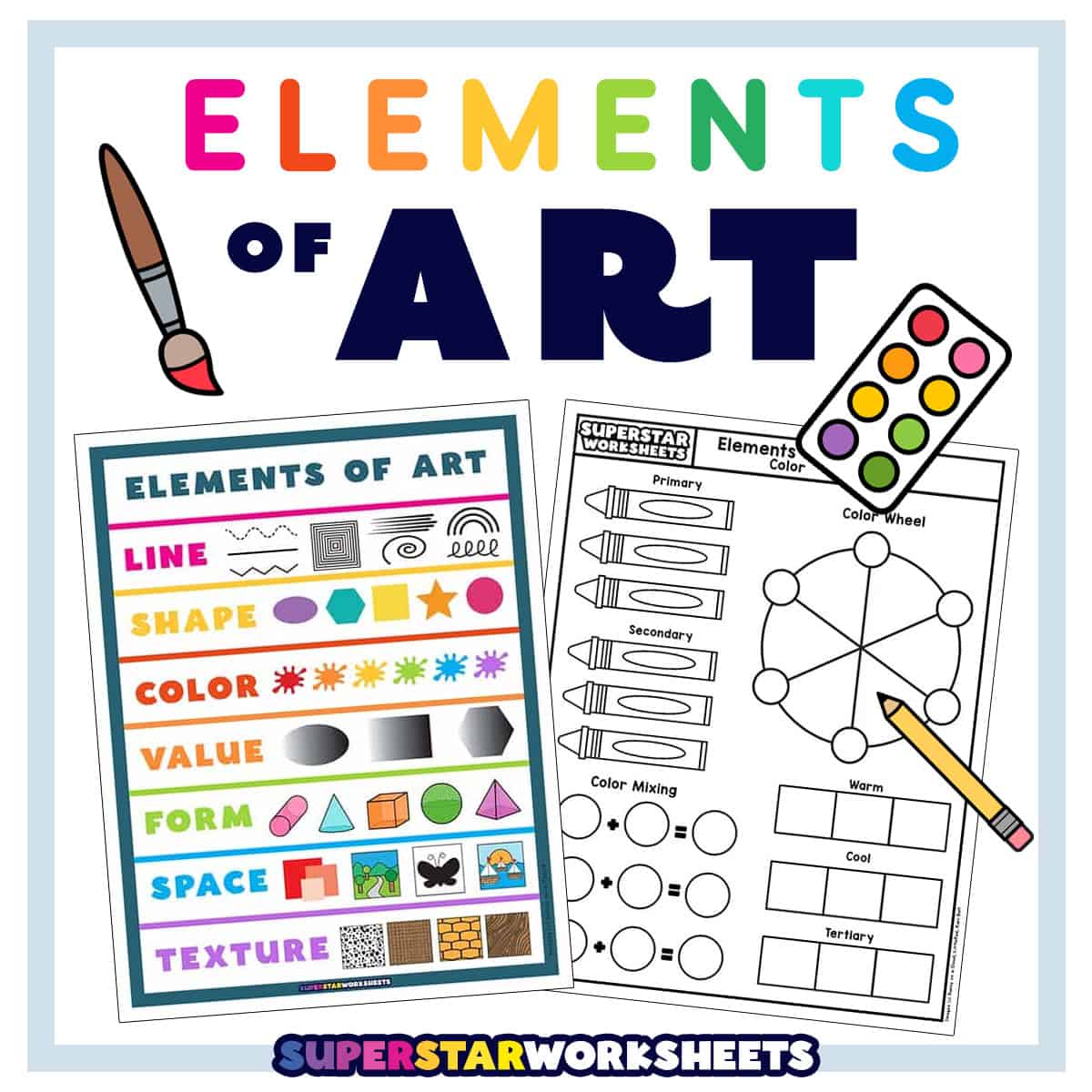
Elements of Art resources for kids! From elementary classrooms to high school studios, this collection of free printable art resources provides classrooms and homeschool families with colorful posters, interactive worksheets, and visual examples. Designed to teach the definition of art principles such as line, shape, form, space, value, texture, and color through hands-on activities, there’s something for every artist.
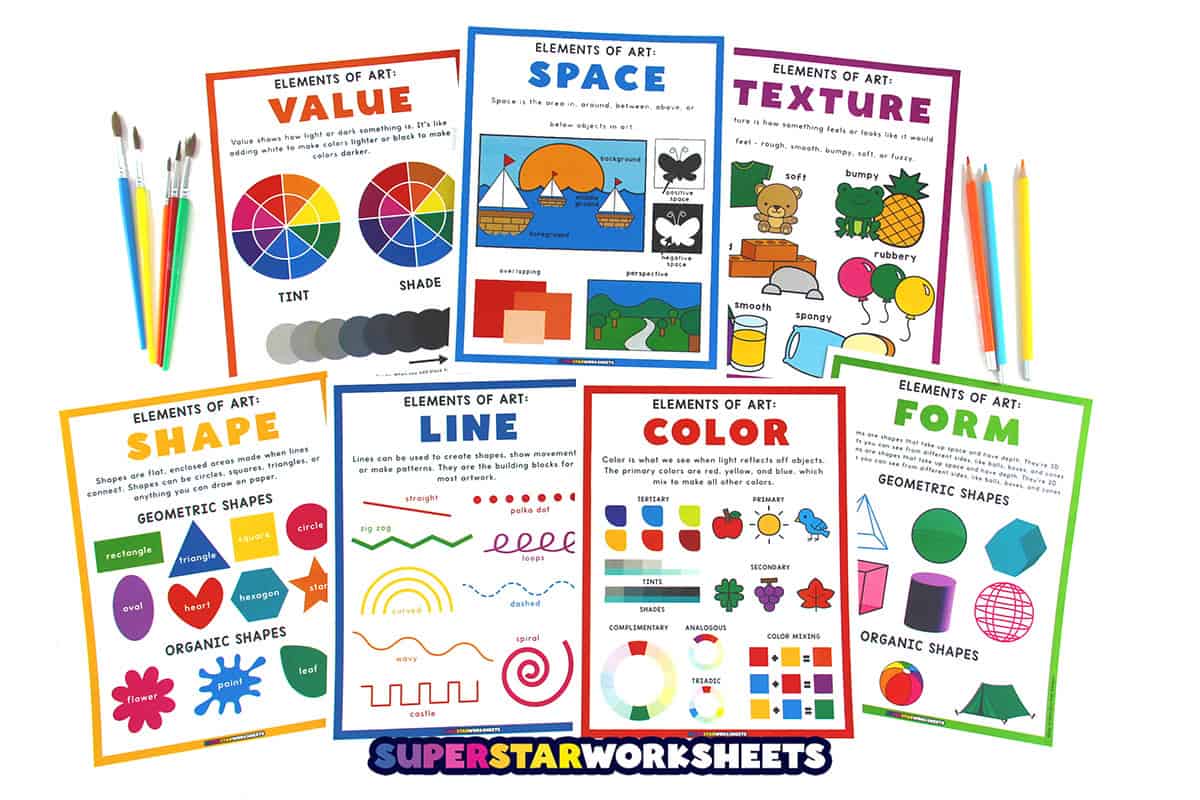
Seven Elements of Art
The seven elements of art—line, shape, form, space, value, texture, and color—are like special tools that artists use to create amazing artwork. Just as builders need hammers and nails to construct houses, artists combine these seven elements to express their ideas and feelings in paintings, drawings, and sculptures. Use all of these elements together to create amazing works in our Drawing Bundle!

Elements of Art
This is a vertical poster showing each of the seven different elements of art. A beautiful full color poster that fits every classroom/homeschool style.
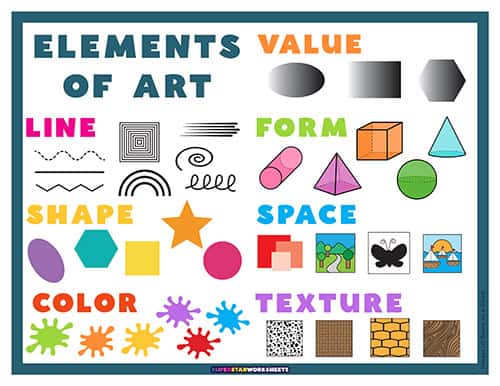
7 Elements of Art
A poster with a lot of information! This page shows students and teachers an example of each of the seven elements of art.
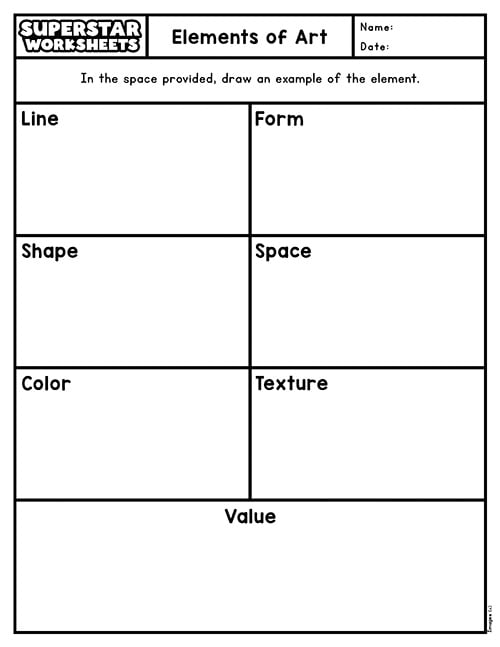
7 Elements of Art Worksheet
Practice student understanding of the 7 elements of art with this printable worksheet. Each box represents an element of art that students will need to draw.
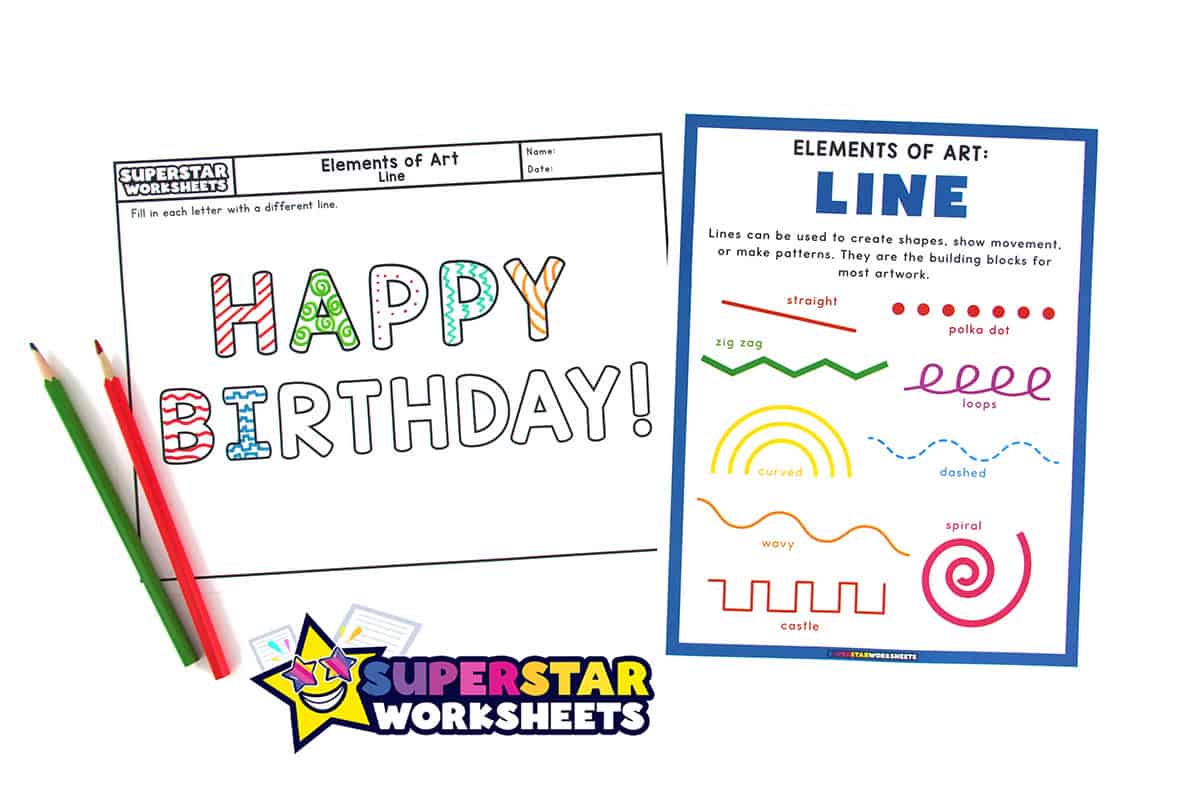
Line
Line is the path created when a point moves through space, appearing as marks that can be thick, thin, straight, curved, zigzagged, or spiral. Artists use lines to create outlines, contours, and textures, conveying a range of emotions. Please encourage students to experiment with different drawing tools and pressures, observing how changing line qualities affects the mood of their artwork.
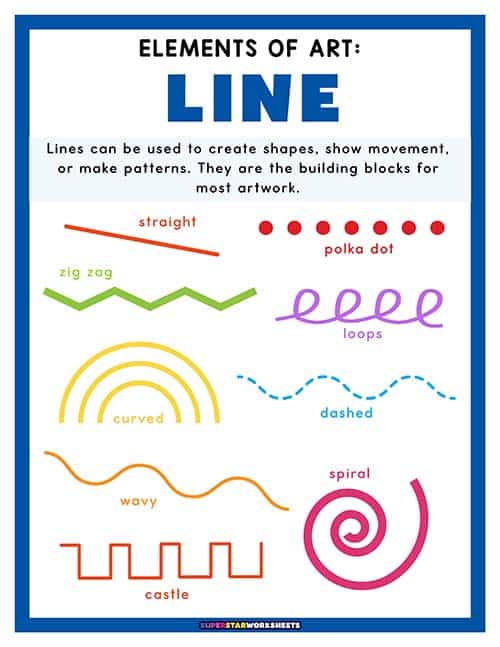
Elements of Art Lines
This poster references the nine line types in kid-friendly language. Post in your classroom, print for student guides, or use it as a tracing page when learning different lines!
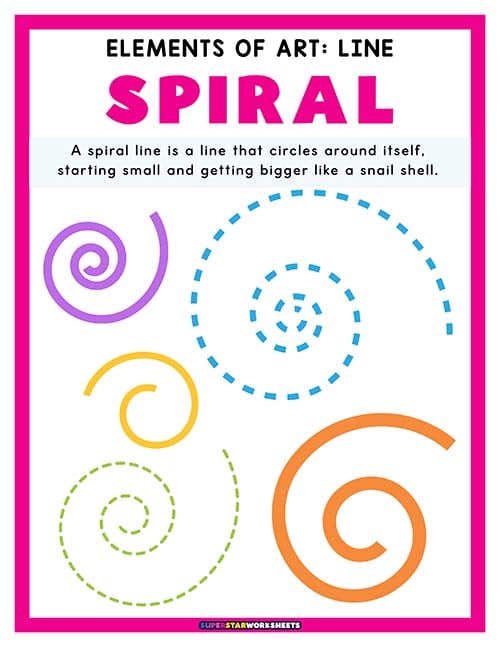
Elements of Art Line Design Spiral
Can you create a spiral line? This poster teaches students what spiral lines look like and how to make them. Grab it free today.
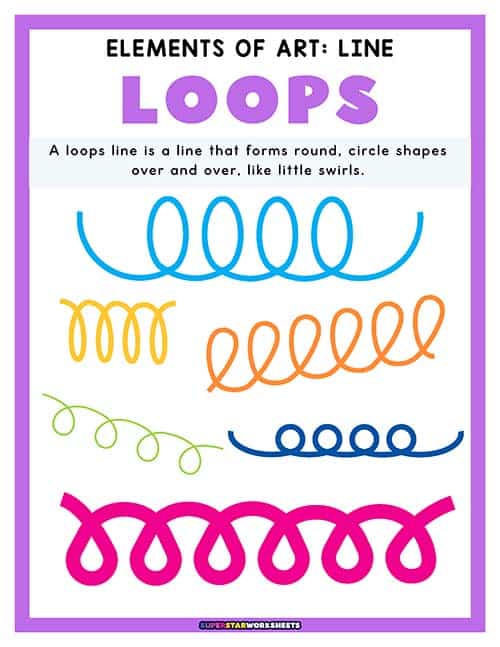
Elements of Art Line Design Loops
Our visual reference poster for loops shows students various loop designs. Grab this printable page for art classrooms, student reference folders, bulletin boards, and so much more!

Elements of Art Line Design Zig-Zag
Zig zags are one of the most fun designs students can make! These lines are sharp and have lots of fun artistic uses. Grab this poster for visual reference.
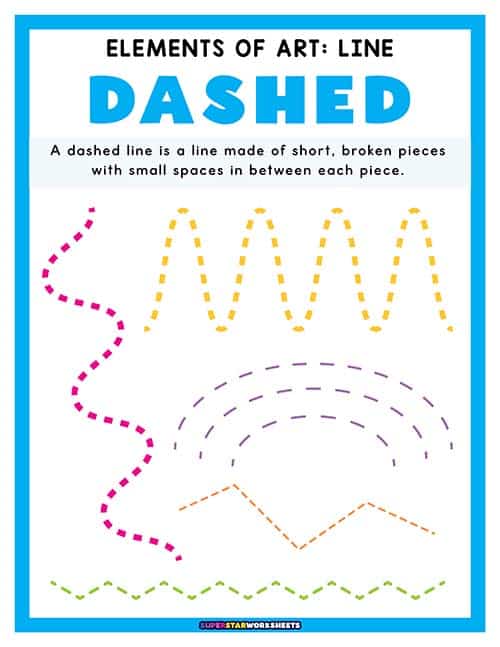
Elements of Art Line Design Dash
Making dashed lines can be so much fun! This poster is the perfect visual reference chart for students. Print and put into student folders or enlarge it for classroom use.
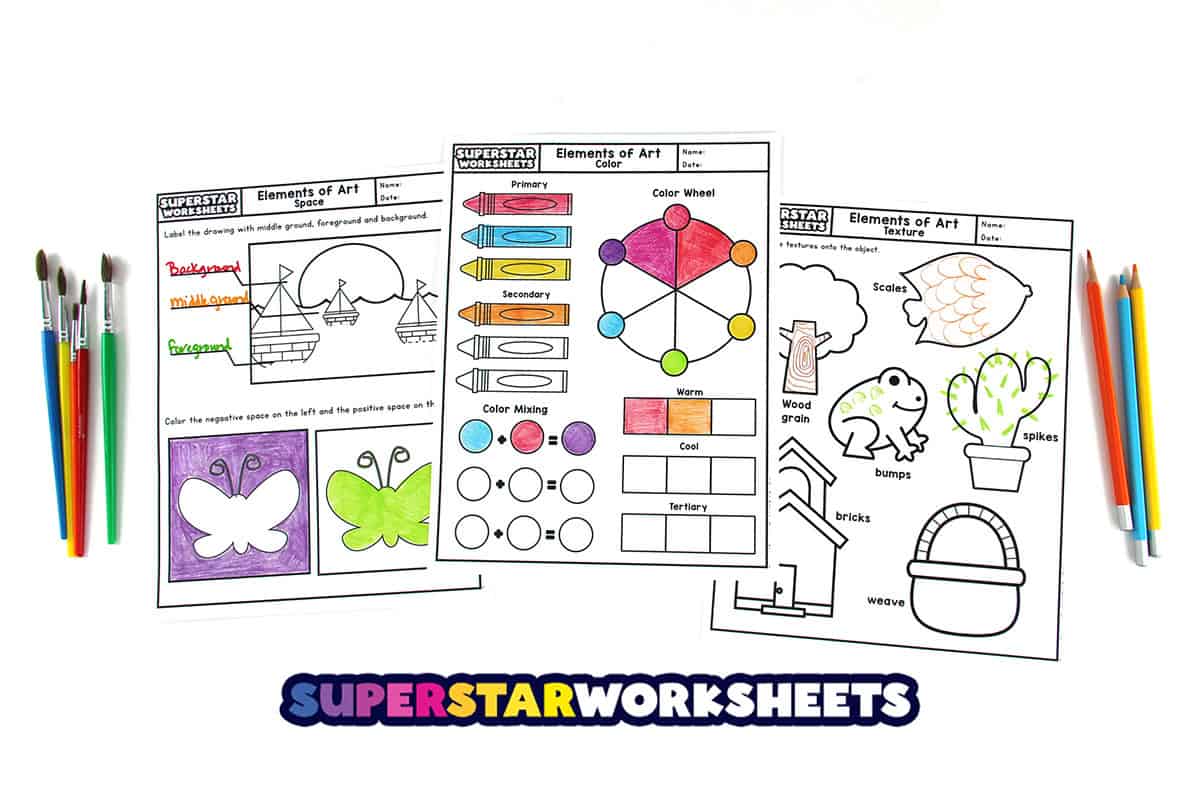
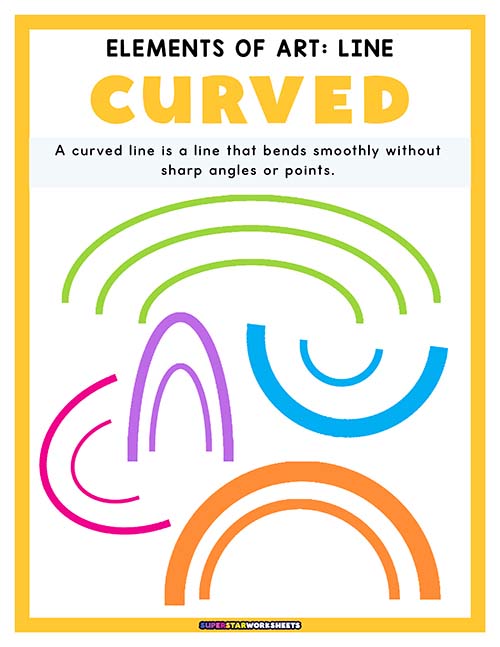
Elements of Art Line Design Curved
Create curved lines like the ones used in this Andy Warhol art project for kids. Students will love having a visual representation of curved lines and you’ll love that they are using their reference pages!
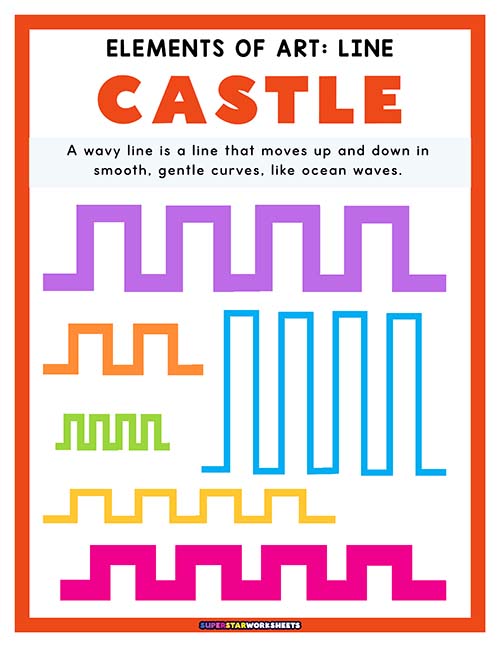
Elements of Art Line Design Castle
Creating castle lines is super fun! This poster shows students the various ways castle lines can be created. Print it out and hang it up or put it in students folders as a visual reference all year long!
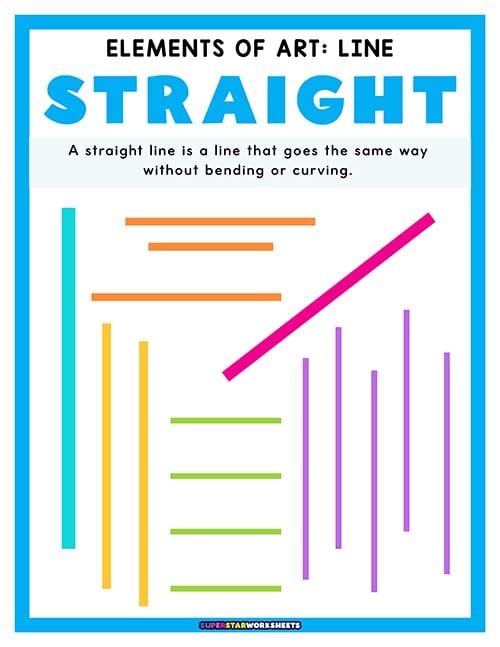
Elements of Art Line Design Straight
Teaching line design? This poster is the perfect reference guide for straight lines. Simply download, print, and hang!

Elements of Art Line Design Wavy
Teach your students about wavy lines with this visual poster. Post in your classroom or homeschool setting for a fun visual reference all year long!
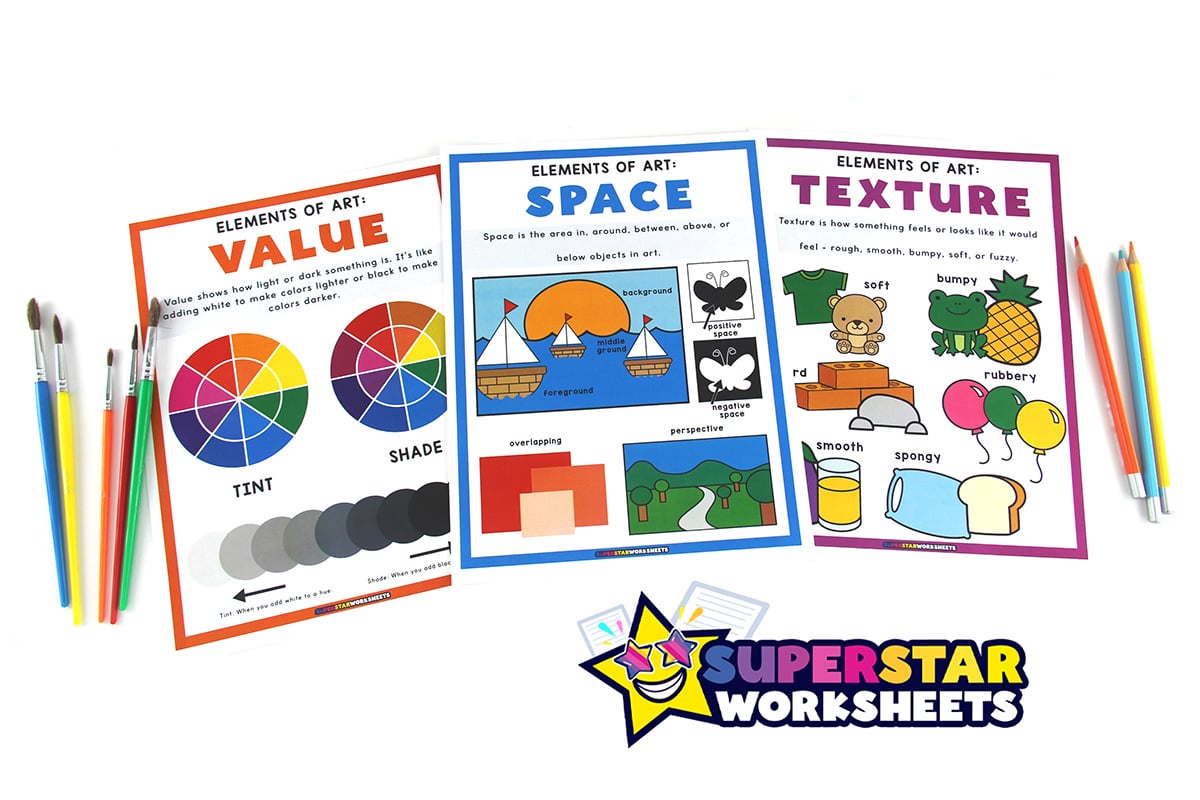
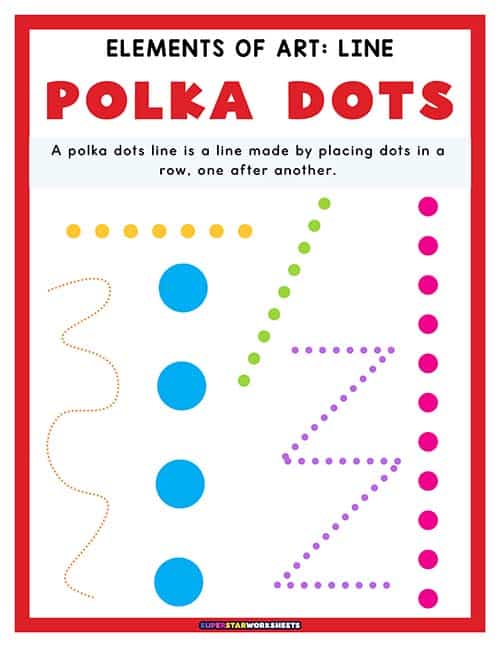
Elements of Art Line Design Polka Dots
Our polka dots poster shows students the various ways polka dots can be used. Hang in your classroom or homeschool setting for a fun visual reference.
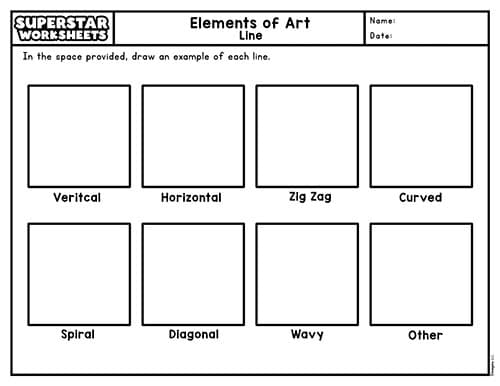
Elements of Art Line Design Worksheet
Creating lines has never been more fun! Give students this as a practice page or use it as an assessment. Students will fill in each box with a different type of line.
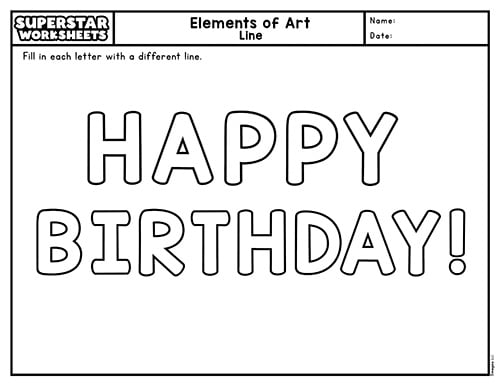
Elements of Art Line Design Example
Practice line design with this free, printable worksheet. Each letter in the word HAPPY BIRTHDAY will be filled in with a different type of line!
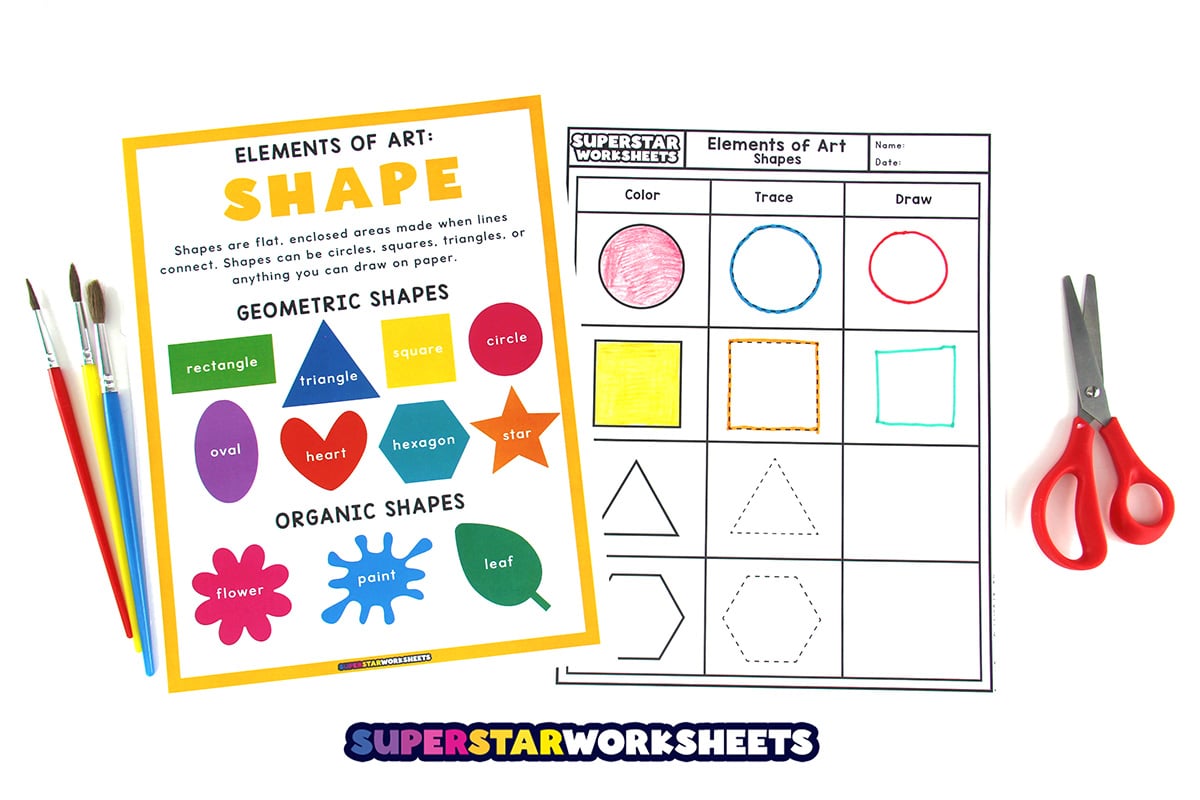
Shape
Shape is a two-dimensional, enclosed area created when lines connect or when areas of color or texture are defined against their surroundings. Artists use shapes as building blocks to create recognizable objects, abstract compositions, or symbolic elements. When teaching shapes, start with identifying basic shapes in the environment before combining them to create more complex pictures.
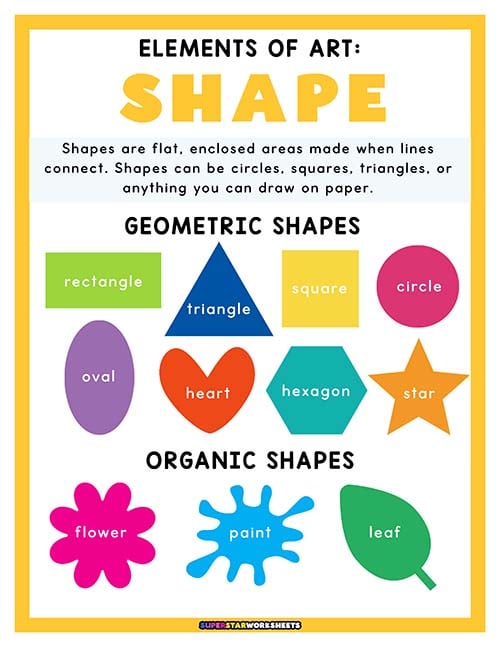
Elements of Art Shapes Design Examples
The perfect shape poster for any classroom or homeschool setting! This chart shows various geometric and organic shapes, as well as describes how each shape is made. Learn which famous artist used which type of shapes with this free resource.
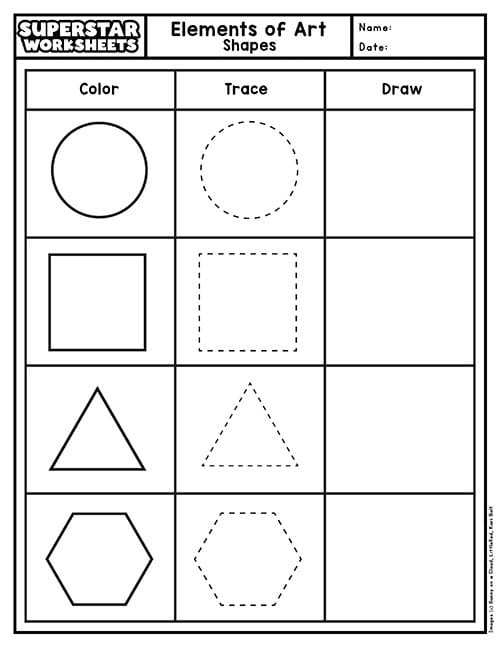
Elements of Art Shapes Design Example
Students will learn how to draw shapes with this worksheet. First color, then trace, and finally draw your shapes. Perfect for elementary and preschool students.
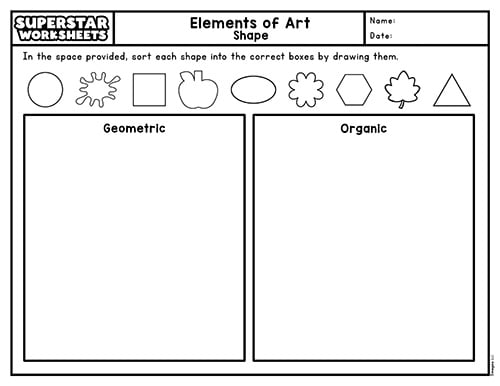
Elements of Art Shapes Worksheet
Students will need to understand geometric and organic shapes to complete this worksheet. This page has students sorting shapes based on their shape.
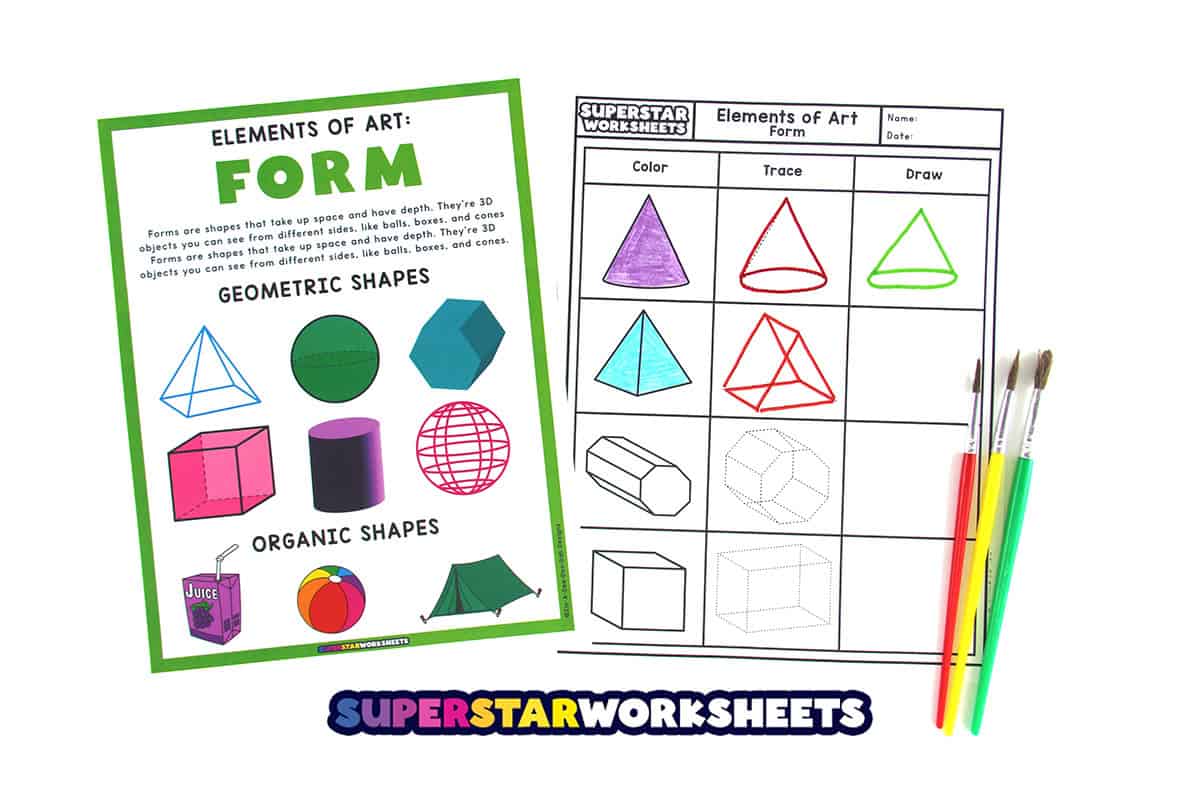
Form
Form refers to three-dimensional objects with height, width, and depth, either physically existing in sculpture and architecture or created through shading and perspective techniques in two-dimensional artwork. Teaching form involves helping students understand light source, shadows, and gradual transitions from light to dark, using exercises like drawing simple geometric solids before progressing to more complex objects.
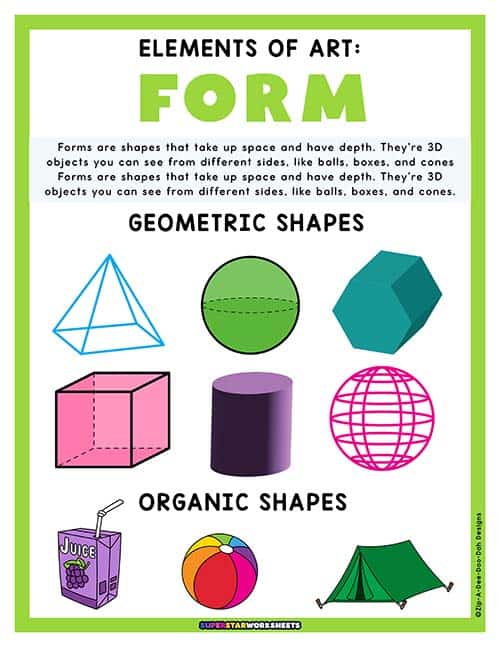
Elements of Art Form Design Examples
Perfect for elementary and middle school art classrooms, this visual aid helps students understand the transition from 2D shapes to 3D forms, supporting spatial reasoning skills and vocabulary development in the visual arts curriculum.
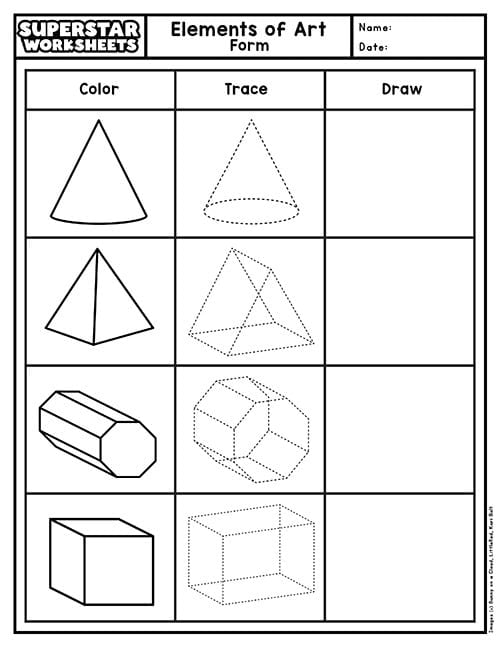
Elements of Art Form Design
Teach three-dimensional drawing techniques with this page. The activity features four common 3D objects (cone, pyramid, cylinder, and cube) arranged in columns for color, trace, and independent drawing practice, building fine motor skills and spatial visualization abilities.
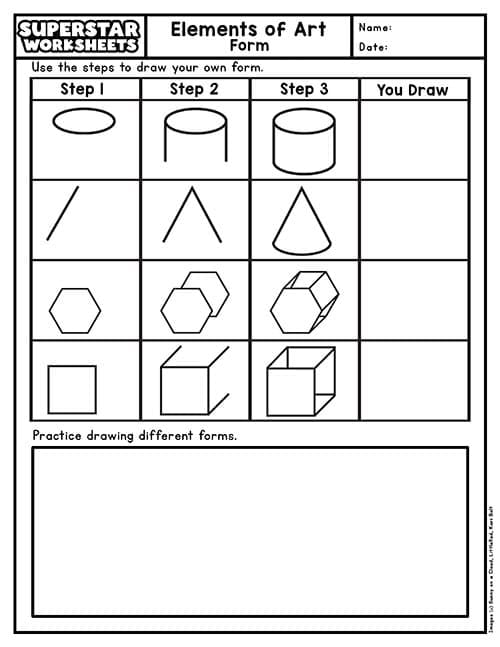
Elements of Art Form Worksheet
This sequential instructional grid shows four progressive examples (cylinder, cone, hexagonal prism, and cube) with clear stages, guiding students from basic shapes to completed three-dimensional forms with proper perspective. The “You Draw” column and additional practice space encourage independent application of newly learned skills.
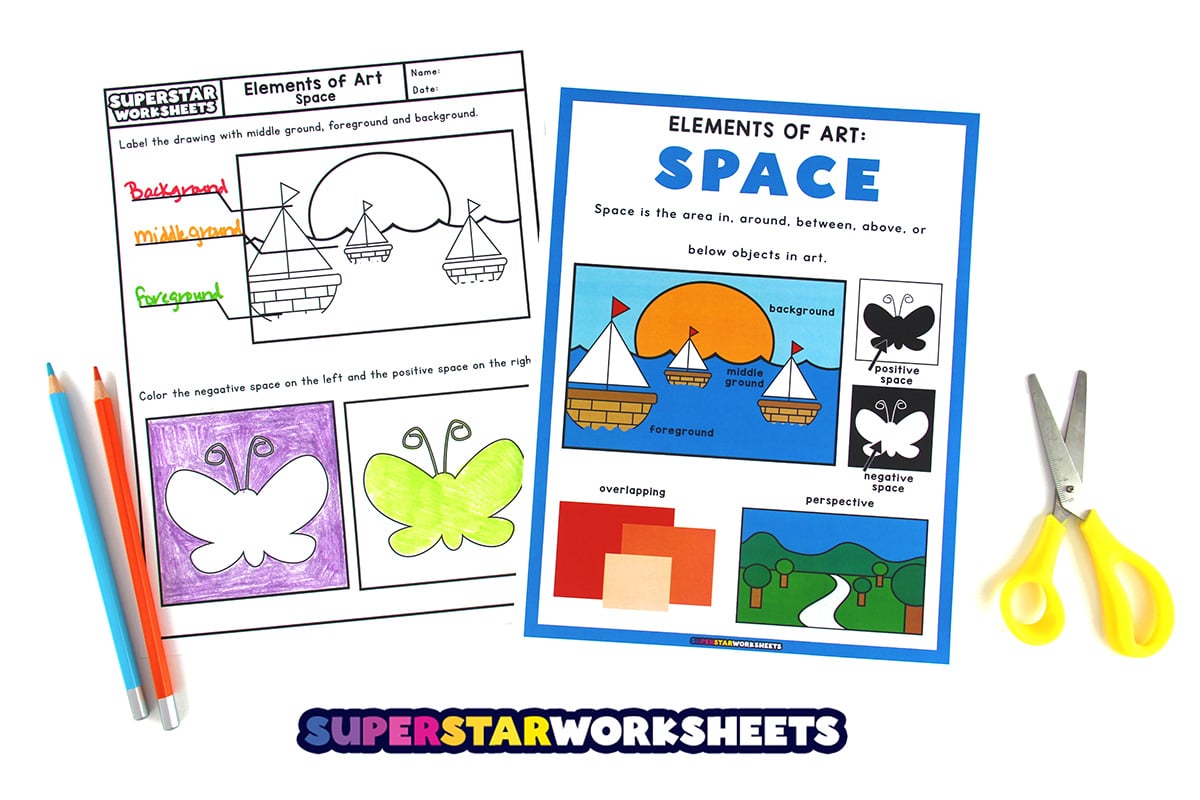
Space
Space is the area within, around, between, above, or below objects in an artwork. Artists manipulate space through techniques like overlapping, size variation, placement on the picture plane, and atmospheric perspective to create depth. When teaching space, have students experiment with foreground, middle ground, and background in compositions.
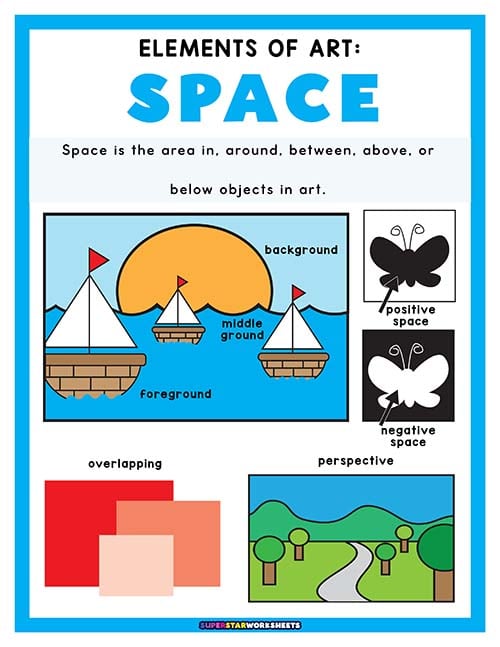
Elements of Art Space Design Examples
This is the perfect elementary visual of space. Show space to your students daily with this printable poster. Simply download and print!
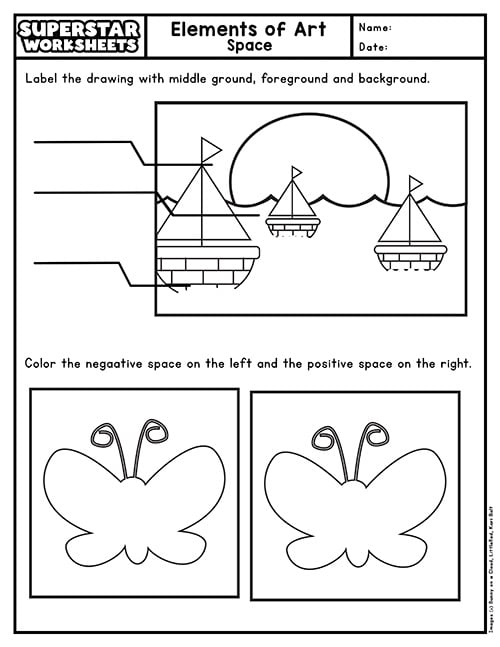
Elements of Art Space Design
Learning about space in art and design? This worksheet is a great practice page or assessment for teachers to give students. Students will need to label foreground, middle ground, background, negative, and positive space.
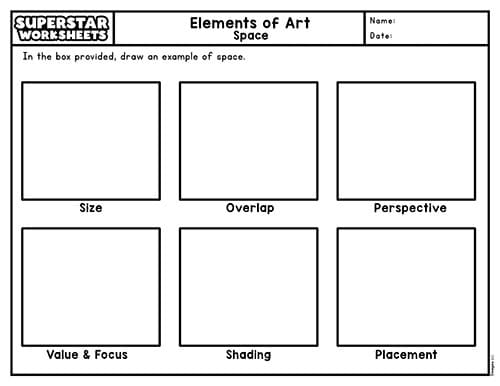
Elements of Art Space Worksheet
Students will enjoy practicing the element of space with this interactive worksheet. Using different techniques, students will show different amounts of space.
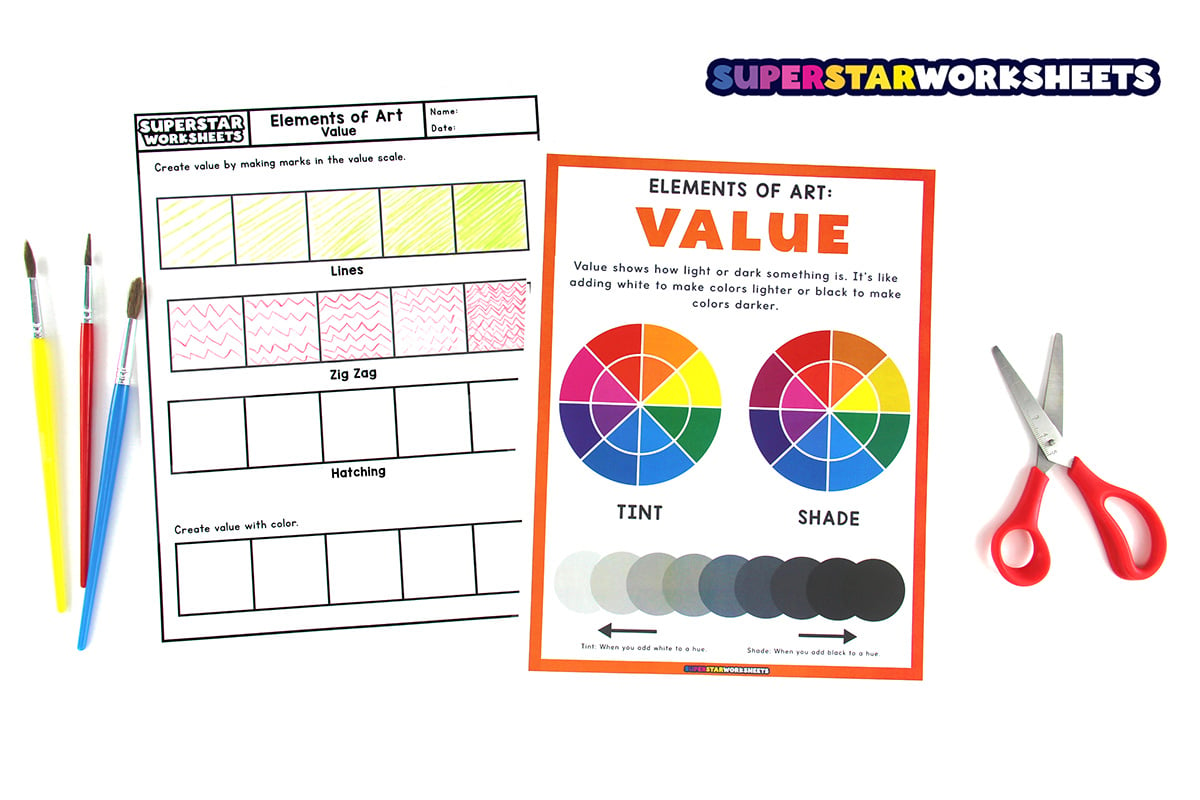
Value
Value refers to the lightness or darkness of a color or neutral tone, creating contrast, volume, and mood in artwork through the arrangement of different tonal values. Artists use value to create the illusion of three-dimensional form and to establish focal points. When teaching value, demonstrate how squinting helps see values more clearly.
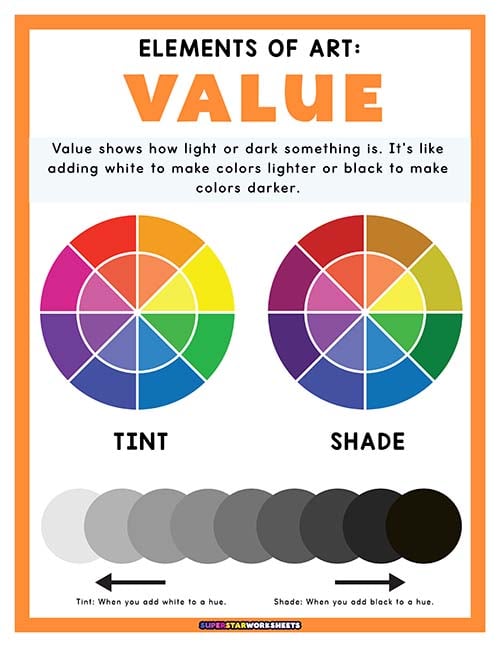
Elements of Art Value Design Examples
This is a great poster to show students what value in art. This visual reference poster can be used throughout the school year as a reminder of the students’ learning.

Elements of Art Value Design
Practice different tints and shades using different techniques. This worksheet has students using lines, zig zags, and hatching to create various values. Find fun crafts to practice with here.
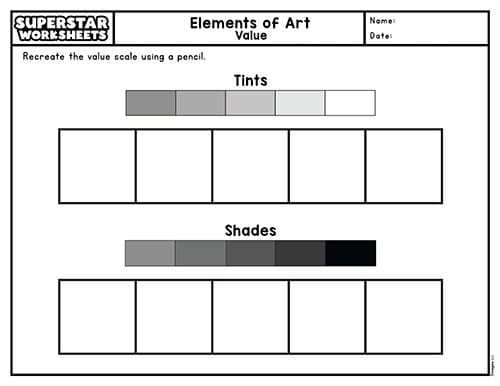
Elements of Art Value Worksheet
Give your students a chance to practice value (tints and shades) with this printable worksheet. Using a pencil, students will create various darknesses by pressing hard or lightly.
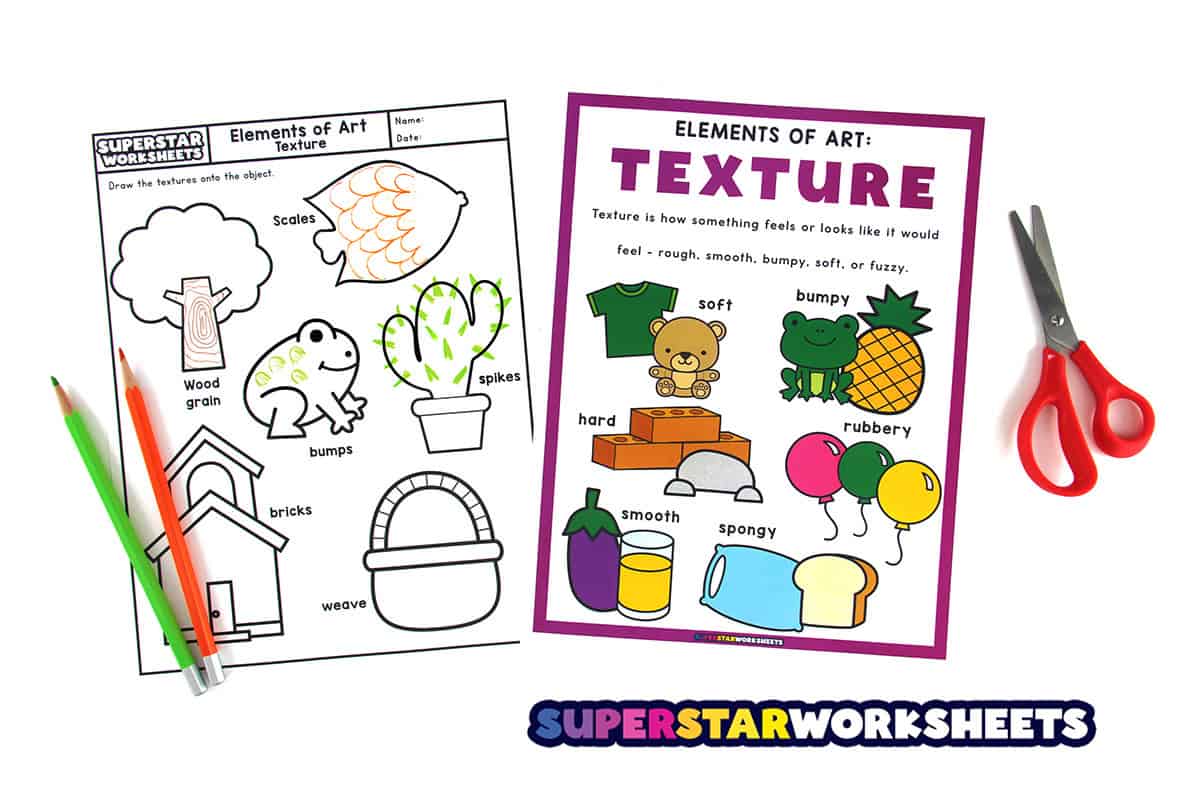
Texture
Texture is the physical quality of a surface or the visual representation of how something might feel if touched. Artists incorporate texture through techniques like impasto painting, collage, printmaking, or detailed rendering to engage viewers’ tactile senses. Provide texture scavenger hunts, rubbing activities with various surfaces, and vocabulary development exercises to help students describe different textural qualities like rough, smooth, bumpy, or silky.
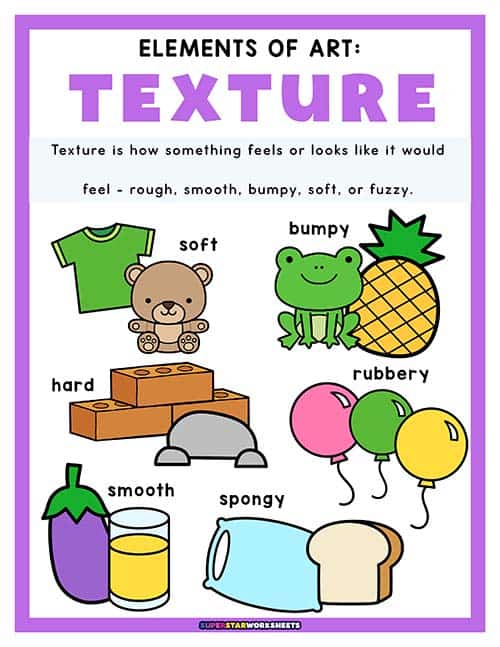
Elements of Art Texture Design Examples
Our free texture poster is a great visual representation of what textures look like in art. With fun graphics that are easy for kids to recognize, this poster will support students’ artistic abilities throughout the school year.
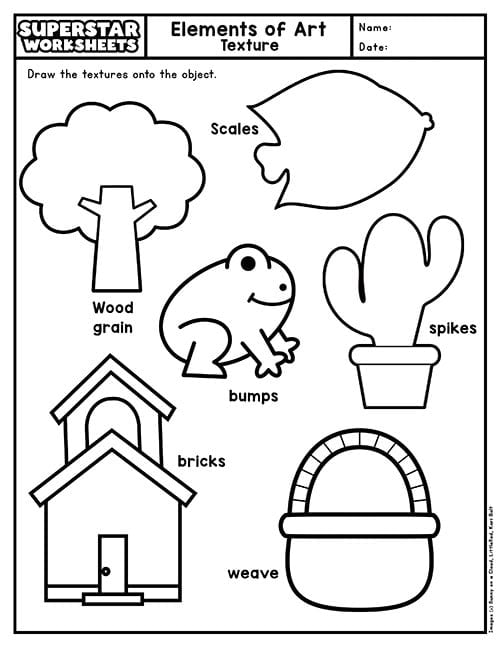
Elements of Art Texture Design
Exploring textures in art has never been more fun! This worksheet gives students the chance to create textures on premade pictures. Students will add spikes to a cactus, bumps to a frog, and scales to a fish!

Elements of Art Texture Worksheet
Use this texture worksheet to help your students understand and create various textures. Students will practice creating examples of different textured objects. Fine more free drawing exercises here.
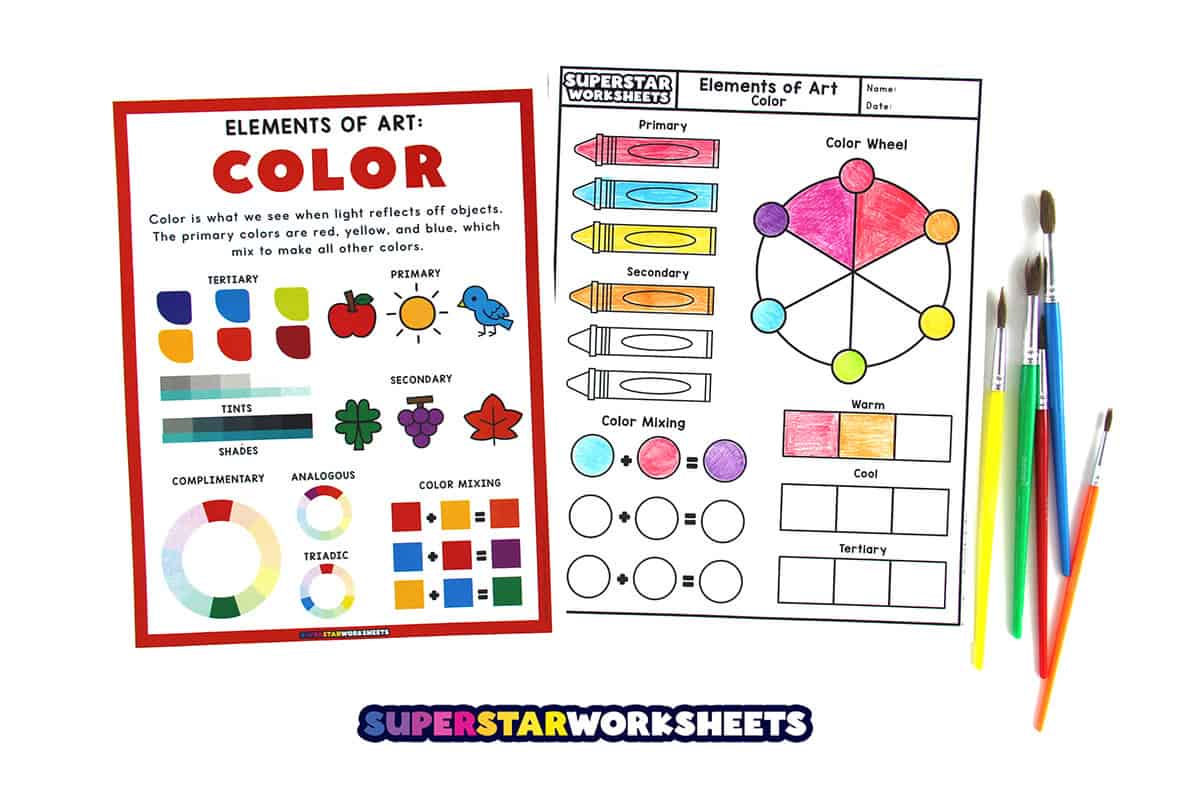
Color
Color is the visual sensation produced when light of different wavelengths strikes the retina. Artists use color to create mood, suggest depth, direct attention, and express emotions. When teaching color, introduce the color wheel, primary/secondary/tertiary relationships, and complementary pairs through hands-on mixing experiments and observation of how colors change when placed next to different neighbors.
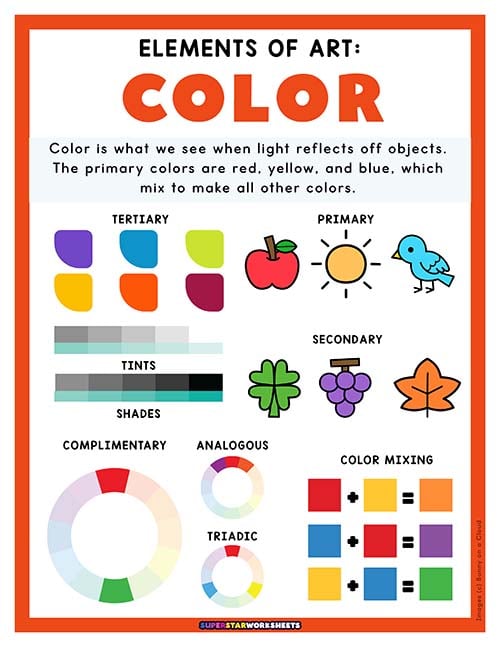
Elements of Art Color Design Examples
This educational chart features primary colors, tints, shades, complementary color pairs, analogous colors, and triadic color relationships using a traditional color wheel. Perfect for elementary art classrooms, this visual reference supports color vocabulary development and artistic exploration.
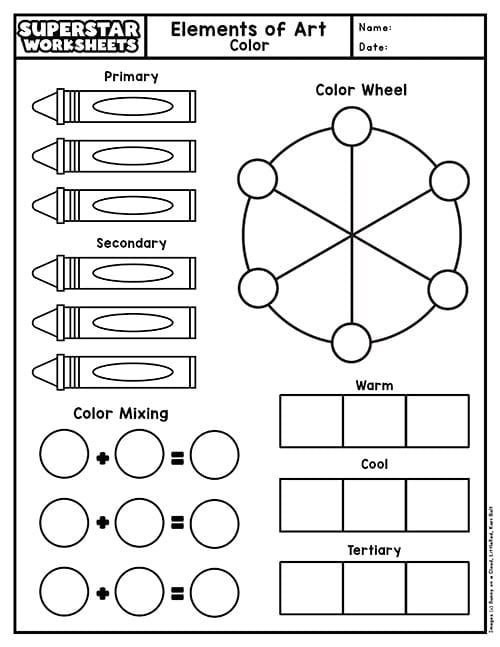
Elements of Art Color Design
This page engages students with multiple color theory concepts in one printable activity. The page features pencil illustrations for labeling primary and secondary colors, a six-section color wheel for demonstrating color relationships, and visual equations showing color mixing principles.
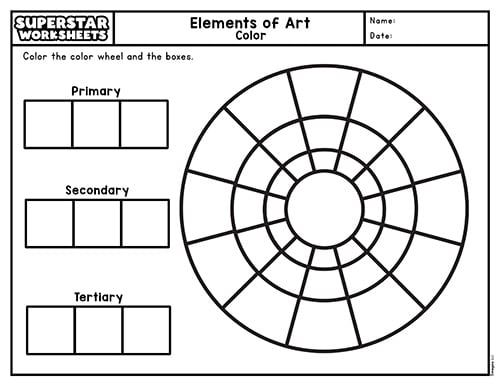
Elements of Art Color Worksheet
This is an interactive color theory activity for elementary students. The black-and-white worksheet features a blank color wheel with spaces for students to fill in primary, secondary, and tertiary colors.

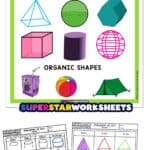
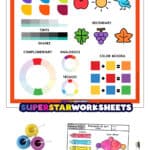
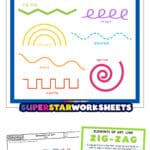
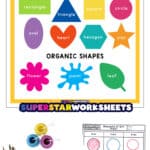
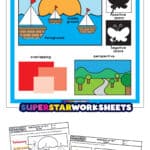

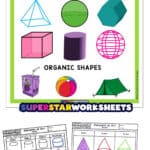
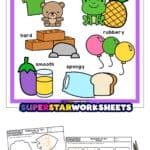
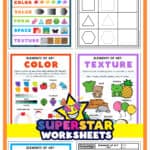
Comments (2)
Thank you so so much for this information and free printables! It is hard to find what one needs to understand the elements of art without breaking the bank only to realize, it may not be what you are looking for. Thank you so much for your generosity!
Thank you for this free art resource. This is a perfect lesson to begin with in Arts. It is detailed and the free worksheets are awesome. I am pretty sure that my Grade 3 students will love this.
Thank you once again and please keep up the good work.